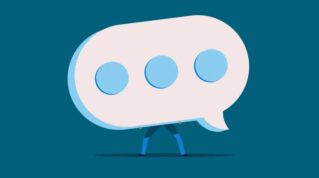One in ten pupils was off school on Tuesday as the rates for strep A and winter respiratory viruses stepped up, new figures suggest.
Data from more than 4,000 schools also show absences at the start of December were higher than at the same time last year when Omicron was circulating in the UK.
On Wednesday, the Department for Education issued an update to schools, saying it was “closely monitoring” cases of Strep A and scarlet fever.
Thirteen school-age children have died in England since September after developing invasive Strep A, known as iGAS.
There have been 652 recorded cases of iGAS since September, compared with an average of 311 in the same timeframe over the past five years.
Attendance data was shared with Schools Week by the school management information system operator Arbor Education.
It shows that between November 30 and December 6, attendance fell from 90.9 per cent to 89.1 per cent – the lowest since September.
While the 1.8 percentage point fall may seem slight, there are more than nine million pupils in England. Extrapolated nationally, this means 161,101 more pupils off school this week than last.
Data for the same dates in 2021 shows attendance at 91.9 per cent on November 30 and 91.6 per cent on December 6.
On the same date in December 2021, Sajid Javid, the then health secretary, told MPs the highly transmissible Covid variant Omicron was circulating within the community.
Schools ‘watchful’ as strep A cases rise
There is no way to tie absence rates to the rise in Strep A cases, as the reasons for absences were not recorded in the data.
UK Health Security Agency (UKHSA) data published on Thursday shows there were 1,062 reported cases of scarlet fever – which is caused by Strep A – in the week beginning November 28, up from 851 in the week before.

Jonny Uttley, the chief executive of The Educational Alliance trust in Yorkshire said attendance was declining “and talking to other school leaders, everybody’s seeing a fall”.
“We’re just very watchful at the moment. We’re not in emergency planning mode, but we’re conscious we have parents who are worried.”
The Diocese of Ely multi-academy trust (DEMAT) said Strep A and scarlet fever had “affected” some of its schools.
Of its 6,800 pupils, eight have confirmed non-invasive Strep A and five have scarlet fever.
A spokesperson said the trust was revising its infectious disease risk assessments, providing advice to each academy and liaising with local public health bodies.
“Catch it, kill it, bin it” posters were making sure pupils understood the the importance of handwashing, and covering their noses and mouths when they sneezed and coughed, they added.
DfE says healthy children should still attend
Ark Schools said it was “closely monitoring” government guidance on infections, and sharing it with families.
A spokesperson said the trust had “balanced this with a reminder that being in school is critical unless [pupils] are sick”.
This is in line with DfE advice sent to schools this week. It said children with scarlet fever should stay at home until at least 24 hours after the start of antibiotic treatment.
An outbreak is defined as two or more scarlet fever cases within 10 days of each other if the individuals have a link, such as being in the same class.
If schools suspect an outbreak, they should notify their local health protection team, which will investigate.
UKHSA guidance states that in “exceptional” circumstances, such as reports of hospital admissions, an outbreak control team could consider the use of antibiotics as a “blanket prevention measure”.
Antibiotics would then be prescribed to individuals with no signs of illness to prevent any infection developing.
But even if there were confirmed or suspected cases in a school, “there is no reason for children to be kept at home if they are well”, the DfE said.
During an education committee hearing on Wednesday, Gillian Keegan, the education secretary, said the department was “working closely” with the UKHSA and monitoring a “worrying” situation.
















Your thoughts